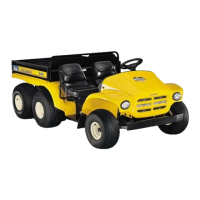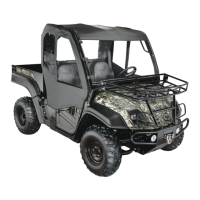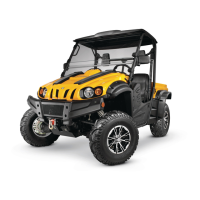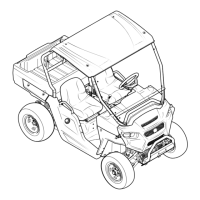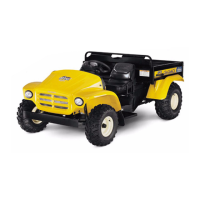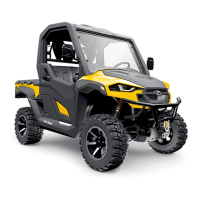Chapter 6 - Hydraulic Brakes
175
BRAKE FLUID FLUSHING AND BLEEDING
The brake fluid should be flushed and bled every two
years.
The brake fluid should be bled any time the pressur-
ized portion of the hydraulic system has been opened.
If only one side of the system has been opened (front
or rear) then only that side needs to be bled. In general
practice though, it is usually convenient to bleed the
entire system
To bleed the brakes:
1. Lift and safely support the vehicle as described
in the Introduction chapter of this manual.
See Figure 6.6.
2. Tilt the hood forward to reach the master cylin-
der. The hood may be removed, at the techni-
cian’s discretion. See Figure 6.7.
Figure 6.6
Figure 6.7
Keep master cylinder
reservoir filled to ”Full”
3. Clean around the cap, and confirm that there is
sufficient fluid in the reservoir. Top-up if neces-
sary.
NOTE: Be careful of spilling brake fluid on
painted surfaces. While the powder-coat pro-
cess used on the frame of the Cub Cadet utility
vehicle line is relatively resilient to brake fluid,
surrounding surfaces may not be.
CAUTION: If the brake fluid level is low, identify
and repair the leak before operating the vehicle.
4. Remove the wheels using a 3/4” wrench.
NOTE: Because the front and rear circuits are
independent, they can be bled independently. It
is most effective to start at the longer side of
each circuit: the passenger side.
5. Connect a clear hose and catch bottle to the first
caliper that is to be bled. See Figure 6.8.
• There are two bleeder screws on each caliper:
one near the top, and one near the bottom.
• Bleeding to purge air is best done at the top fit-
ting.
• When doing a periodic maintenance flush, a
small amount of fluid may be flushed from the
bottom fitting to remove any settled residue or
moisture.
6. Open the bleeder screw using a 1/4” wrench.
NOTE: It may be necessary to loosen, rotate,
and re-tighten the banjo fitting slightly for wrench
clearance. Use a 1/2” wrench on the banjo bolt.
• The system should gravity-bleed without any
additional pressure.
Figure 6.8
Upper
bleed screw
Lower
bleed screw
Fluid catch-bottle
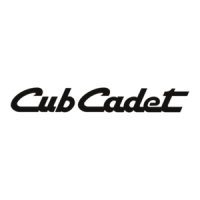
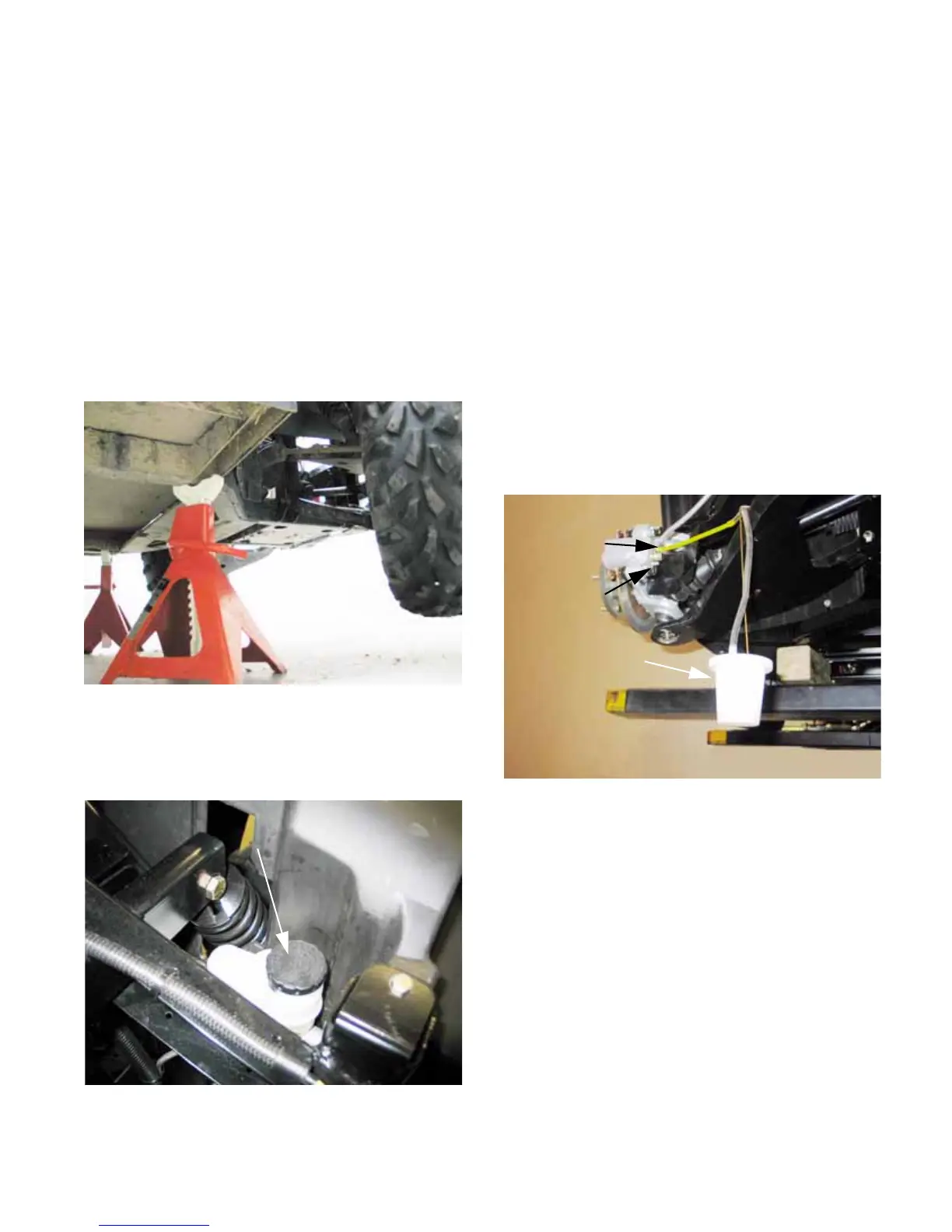